
Fundamentals
African Dye Traditions encompass the diverse, centuries-old practices of using natural substances to impart color to hair, skin, and textiles across the African continent. This practice extends far beyond mere aesthetics; it represents a deep connection to the earth, to community, and to ancestral wisdom. For textured hair, these traditions were, and remain, an expression of identity, status, and well-being, deeply woven into the very fabric of daily life and ceremonial rites.
The substances employed derive directly from the natural world—plants, minerals, and sometimes even animal products—processed through time-honored methods passed down through generations. These traditions offer a testament to human ingenuity and the profound relationship between humanity and the environment, especially concerning personal adornment and communal expression within African societies.
The core meaning of African Dye Traditions centers on the intentional application of natural pigments to alter the appearance of hair. This was achieved through the careful selection of local flora and geological elements, each bearing its own properties and symbolic significance. From the crimson clays that speak of life’s vitality to the deep blues echoing the sky, these colors conveyed narratives about lineage, social standing, and spiritual connections. The use of these natural agents for hair coloring stands in stark contrast to many contemporary practices, underscoring a harmonious integration with the natural world rather than a departure from it.
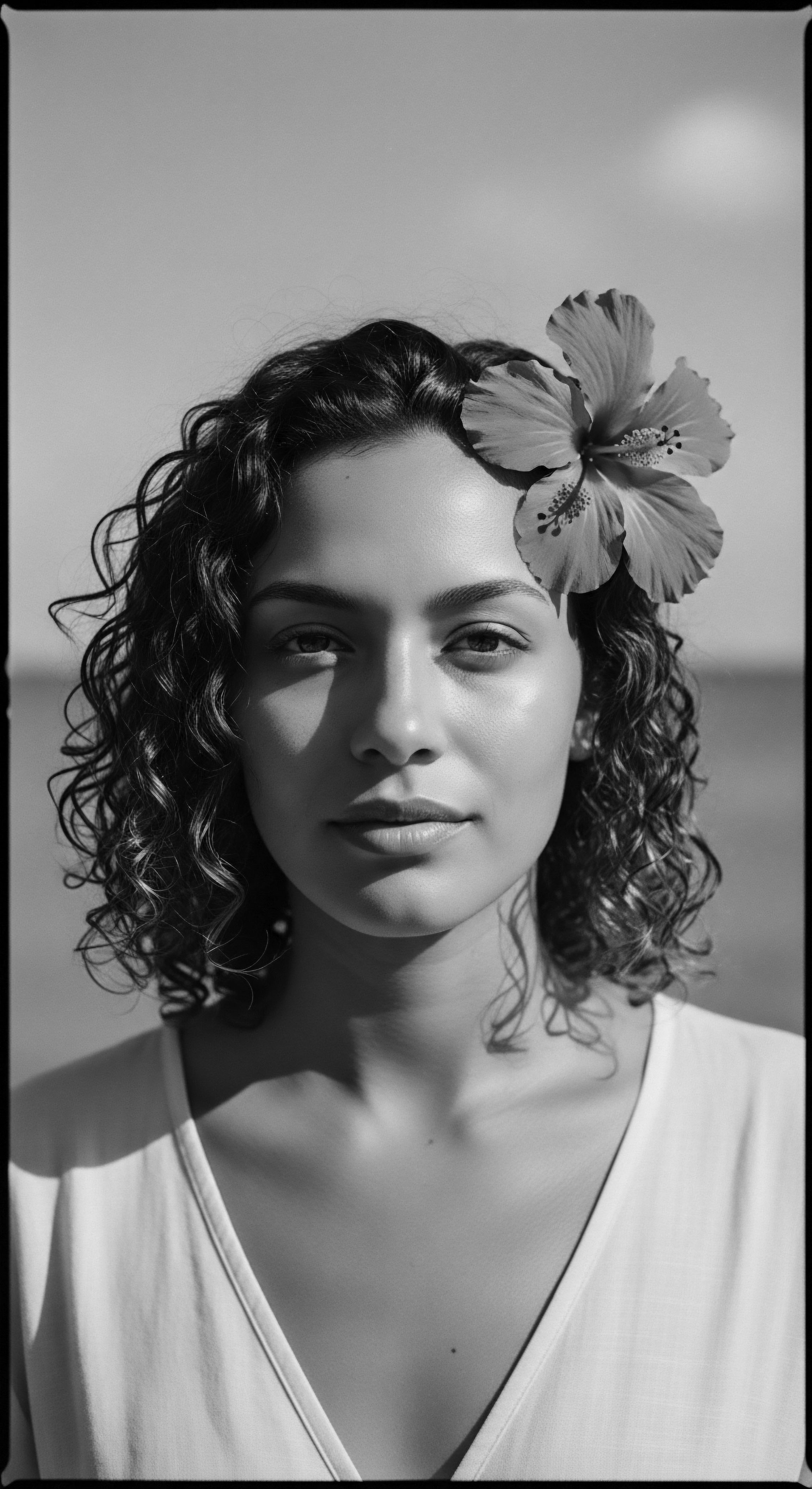
Elemental Origins of African Hair Dyes
The earliest forms of hair coloring in Africa sprang from a profound understanding of the natural world. Indigenous communities observed the staining properties of various plants and minerals, transforming these observations into sophisticated systems of color application. This elemental knowledge speaks to a time when human beings lived in close synchronicity with their environment, discerning the potential of every leaf, root, and stone.
- Ochre (Hematite) ❉ This natural earth pigment, ranging from yellow to deep red, stands as one of the most ancient and widely recognized materials for body and hair adornment across Africa. Its use extends beyond simple coloration, providing practical benefits like sun protection.
- Indigofera Plants ❉ Various species of the Indigofera plant yielded vibrant blue pigments, historically used for both textiles and hair. This botanical source created rich, lasting shades of blue that held cultural and economic value.
- Henna (Lawsonia Inermis) ❉ Derived from the dried and powdered leaves of the henna plant, this dye imparts reddish-brown tones. It found widespread use in North, West, and East Africa for hair, skin, and ceremonial body art.
These primary dye sources were not merely utilitarian; they were imbued with cultural significance, their application often a ritual, connecting individuals to their heritage and communal narratives. The selection of materials was deliberate, reflecting a deep respect for the earth’s offerings and a keen awareness of their intrinsic properties.
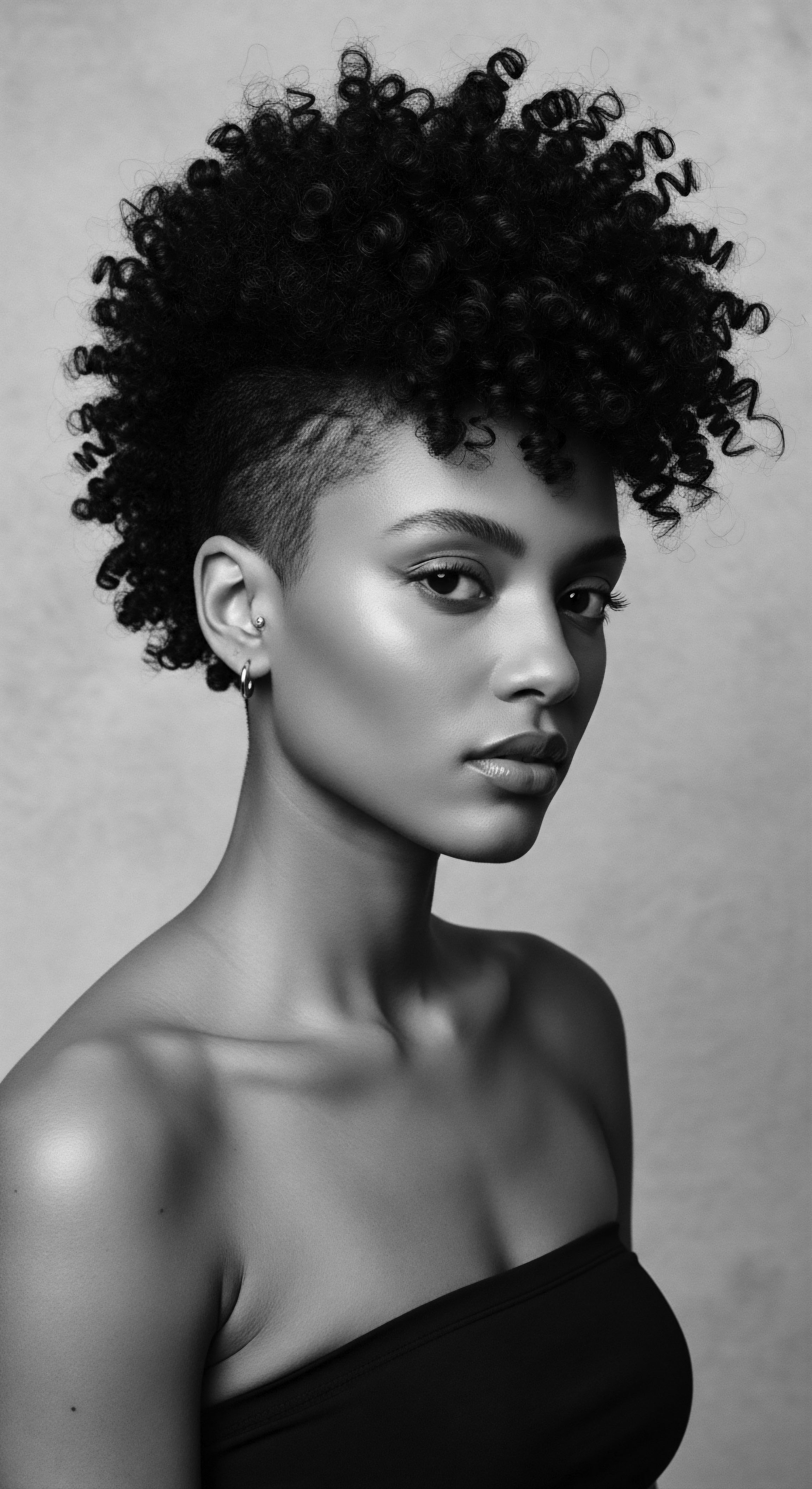
Intermediate
Moving beyond the foundational understanding, the intermediate scope of African Dye Traditions reveals a complex interplay of cultural communication, social stratification, and the intricate care rituals surrounding textured hair. These traditions illustrate how hair coloring was not merely about changing a shade; it served as a living canvas, communicating a person’s life stage, lineage, and communal affiliations. The application of these dyes often involved communal gatherings, transforming a practical task into a cherished social event where wisdom and bonding flourished.
The significance of these traditions lies in their ability to convey meaning without spoken words. Hair, augmented by natural dyes, became a visual language, a tangible expression of a person’s story within their community. This visual lexicon allowed for immediate understanding of an individual’s place, their responsibilities, and their personal journey. The methods for preparing and applying these dyes, while seemingly simple, reflected generations of refined practice and an intimate knowledge of material science, predating formal scientific inquiry.

Cultural Significance of Hair Color in African Societies
Hair has long been a powerful indicator of identity in African societies, serving as a medium for expressing social standing, age, marital status, and even spiritual beliefs. The application of natural dyes played a crucial role in these visual narratives, intensifying the symbolism of particular hairstyles and personal adornments.
Hair coloring in ancient Africa was a deliberate act of self-expression and social coding, with each shade telling a story within the community.
For instance, among the Himba people of Namibia, the distinctive reddish hue of their hair, achieved by coating it with a paste of red ochre and butterfat, is a profound statement. This mixture, known as Otjize, provides protection from the sun and insects while simultaneously symbolizing earth, blood, and the very essence of life. The specific styles and the application of this ochre also vary according to a woman’s age and marital status; young girls traditionally wear two braids, while married women adopt more elaborate designs, sometimes featuring a crown made of leather. This example clearly demonstrates how hair, transformed by natural dyes, becomes a living document of an individual’s journey and their community’s heritage.

Methods and Materials ❉ A Heritage of Skill
The methods for preparing and applying African dyes often involved a deep understanding of botanical and mineral properties. This knowledge was transmitted orally, from elder to youth, preserving techniques that maximized pigment extraction and colorfastness. The process was not solitary but a communal endeavor, especially among women, fostering social connections and passing on cultural wisdom.
| Traditional Material Otjize |
| Botanical/Mineral Source Red ochre (hematite) mixed with butterfat |
| Typical Color Result Vibrant reddish-brown |
| Cultural Application/Significance Himba women, symbolic of earth, life, beauty, and status; provides sun protection. |
| Traditional Material Indigo Paste |
| Botanical/Mineral Source Indigofera plant leaves |
| Typical Color Result Deep blues to nearly black |
| Cultural Application/Significance Often mixed with henna for darker shades; signifies wealth and status in West African textile traditions, sometimes used for hair and skin. |
| Traditional Material Henna Powder |
| Botanical/Mineral Source Lawsonia inermis leaves |
| Typical Color Result Reddish-orange to deep brown (depending on mixture) |
| Cultural Application/Significance Used across North, West, and East Africa for ceremonial body art and hair coloring, symbolizing fertility and good fortune. |
| Traditional Material Walnut Hulls |
| Botanical/Mineral Source Juglans regia (black walnut) |
| Typical Color Result Brown to dark brown |
| Cultural Application/Significance Often used for deepening hair color and offering conditioning benefits. |
The application processes were equally thoughtful, often involving steps that maximized the dye’s adherence and longevity on textured hair, which possesses a unique porosity and curl pattern. The communal nature of these practices solidified bonds, making the act of hair dyeing a shared experience, a tender thread connecting individuals to the collective heritage.

Academic
African Dye Traditions, understood through an academic lens, transcend simple beautification practices to reveal sophisticated ethno-botanical knowledge, complex socio-cultural systems, and profound expressions of identity and resilience. A precise definition of African Dye Traditions delineates the historical and contemporary practices across the African continent and diaspora involving the deliberate alteration of hair, skin, and textile coloration using naturally derived pigments from botanical, mineral, and occasionally zoological sources, integrated within ceremonial, communicative, and aesthetic frameworks, often deeply intertwined with textured hair heritage and Black/mixed hair experiences. This meaning is elucidated by examining the inherent properties of these natural colorants, their chemical interactions with keratin, and the intricate social structures that informed their application and symbolism. The rigorous study of these traditions necessitates an interdisciplinary approach, drawing from anthropology, ethnobotany, organic chemistry, and cultural studies to apprehend their multifaceted significance and enduring impact.
The foundational aspect of African Dye Traditions lies in the elemental biology of the dyes themselves. Natural pigments possess chromophores, specific molecular structures that absorb and reflect light at particular wavelengths, thereby imparting color. For instance, the Lawsone molecule in henna (Lawsonia inermis) reacts with the keratin protein in hair, forming a semi-permanent bond that stains the hair shaft a reddish-orange to deep brown color. Similarly, indigo contains indigotin, a compound that, upon oxidation, develops its characteristic blue hue, adhering to fibers and hair surfaces.
The effectiveness of these natural colorants on textured hair, with its unique cuticular structure and density, highlights an ancestral understanding of natural chemistry—a knowledge system built on generations of observation and experimentation. Unlike many modern synthetic dyes that penetrate and chemically alter the hair’s internal structure through oxidative processes involving ammonia and hydrogen peroxide, traditional plant-based dyes often coat the hair shaft, providing a layer of color while preserving the hair’s integrity. This distinction speaks to an inherent reverence for hair health and longevity within African ancestral practices.
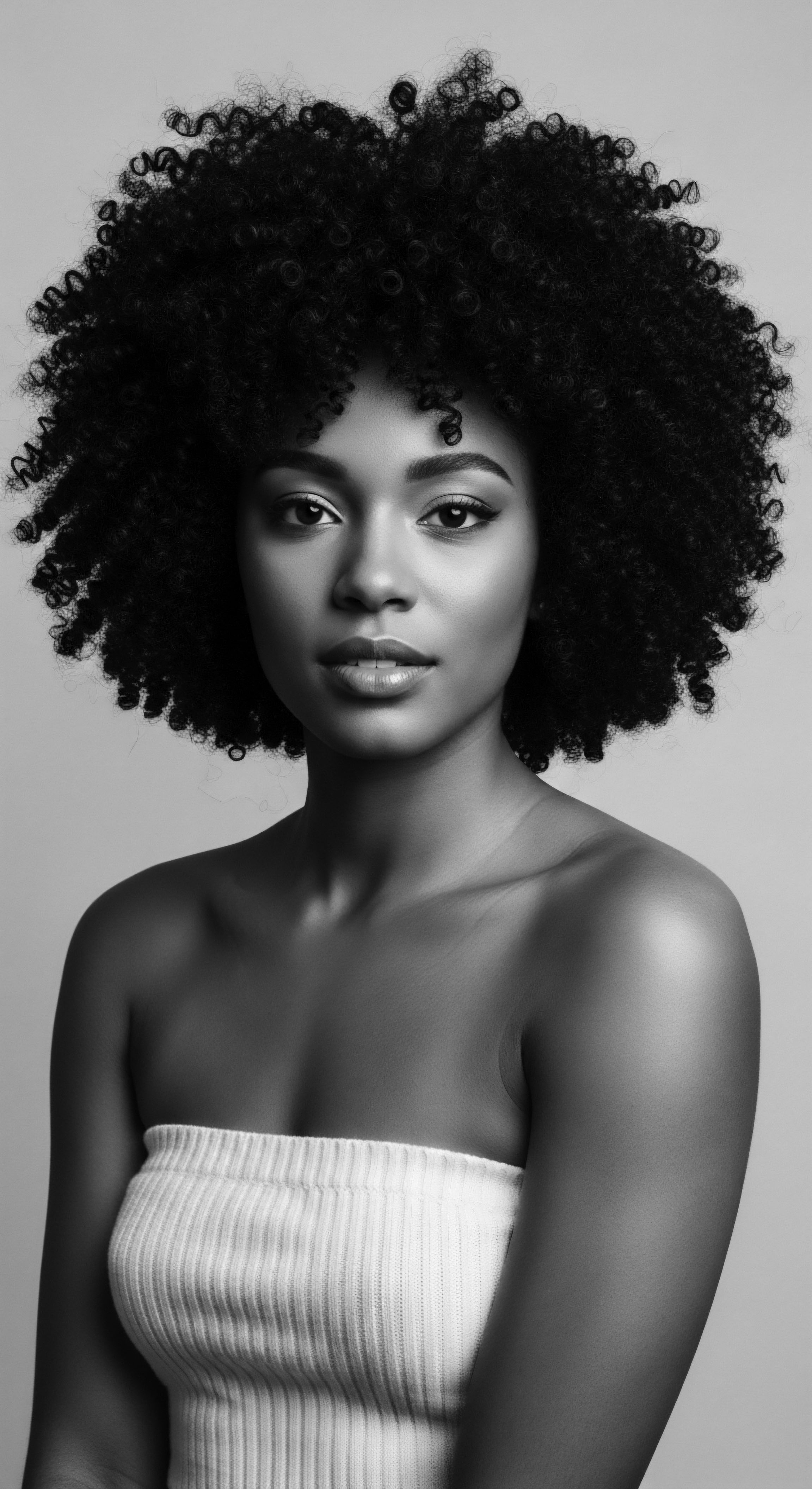
Echoes from the Source ❉ Bio-Chemistry of Ancestral Color
The ancient wisdom embedded in African Dye Traditions reveals a deep empirical understanding of natural chemistry. The preparation of these dyes often involved methods designed to optimize pigment extraction and stability. For example, fermentation processes were sometimes employed to activate dye compounds, a precursor to modern biochemical extraction techniques. The symbiotic relationship between the chosen plant or mineral and the hair’s natural composition was central to achieving desired results, a testament to keen observational science.
The molecular narratives of natural dyes reveal an ancient science, where plant and mineral pigments engage with hair’s keratin, coloring while maintaining its integrity.
The application of red ochre, notably by the Himba people, presents a compelling case for the dual functional and symbolic roles of these natural pigments. The Himba use Otjize, a paste of red ochre, butterfat, and sometimes aromatic resins, not only for its striking red color but also as a practical protective barrier against the sun’s intense ultraviolet (UV) radiation and as an insect repellent. Scientific studies have begun to validate this ancestral wisdom; a 2022 study by South African and French scientists, published in the Journal of the European Academy of Dermatology and Venereology, concluded that red ochre exhibits “exceptional UV filtration and significant IR reflectivity,” substantiating its effectiveness as a UV-blocking and solar heat reflector, contributing to the low skin cancer rate observed within the Himba community (Smith et al. 2022).
This statistic offers a powerful example of how ancestral practices, seemingly aesthetic, possessed a profound scientific basis for protective hair and skin health. This dual benefit—aesthetic transformation and physiological protection—underscores the holistic nature of African Dye Traditions, a concept often overlooked by a reductionist modern gaze.

The Tender Thread ❉ Living Traditions and Communal Care
Beyond the molecular interactions, the profound meaning of African Dye Traditions is intrinsically linked to their role in communal life and the perpetuation of cultural identity. Hair practices were, and continue to be, shared experiences, acting as social opportunities for bonding among family and friends. These rituals fostered intergenerational transmission of knowledge, where elders imparted not only the technical skills of dye preparation and application but also the accompanying lore, songs, and communal values.
- Intergenerational Knowledge Transfer ❉ The processes of preparing and applying natural hair dyes are not merely individual tasks; they often involve extended periods of interaction between family members, especially women. This shared experience creates a direct lineage of traditional knowledge, ensuring the continuity of specific techniques and the cultural context surrounding them.
- Social Markers and Rites of Passage ❉ Hair styling, often enhanced by natural dyes, serves as a visual indicator of various life stages, including puberty, marriage, and motherhood. Among the Fulani people of West Africa, for instance, elaborate hairstyles adorned with beads and cowrie shells signal fertility and social standing, particularly for brides. These customs highlight the deep societal integration of hair dyeing as a marker of identity.
- Spiritual Connection ❉ In many African belief systems, hair is considered a conduit to the spiritual realm, a connection to ancestors, and a source of power. The application of natural dyes can be part of sacred rituals, imbuing the hair with protective or symbolic properties. The act of coloring hair with earth-derived pigments, for example, can be seen as a reaffirmation of one’s connection to the land and its spiritual energies.
The continuation of these practices, even in the face of colonial suppression that sought to erase African cultural identity through forced hair shaving and the imposition of Eurocentric beauty standards, speaks to the enduring resilience of these traditions. The ability to maintain aspects of these hair rituals, even in subtle ways, became a quiet act of resistance, preserving a link to ancestral homeland and selfhood.
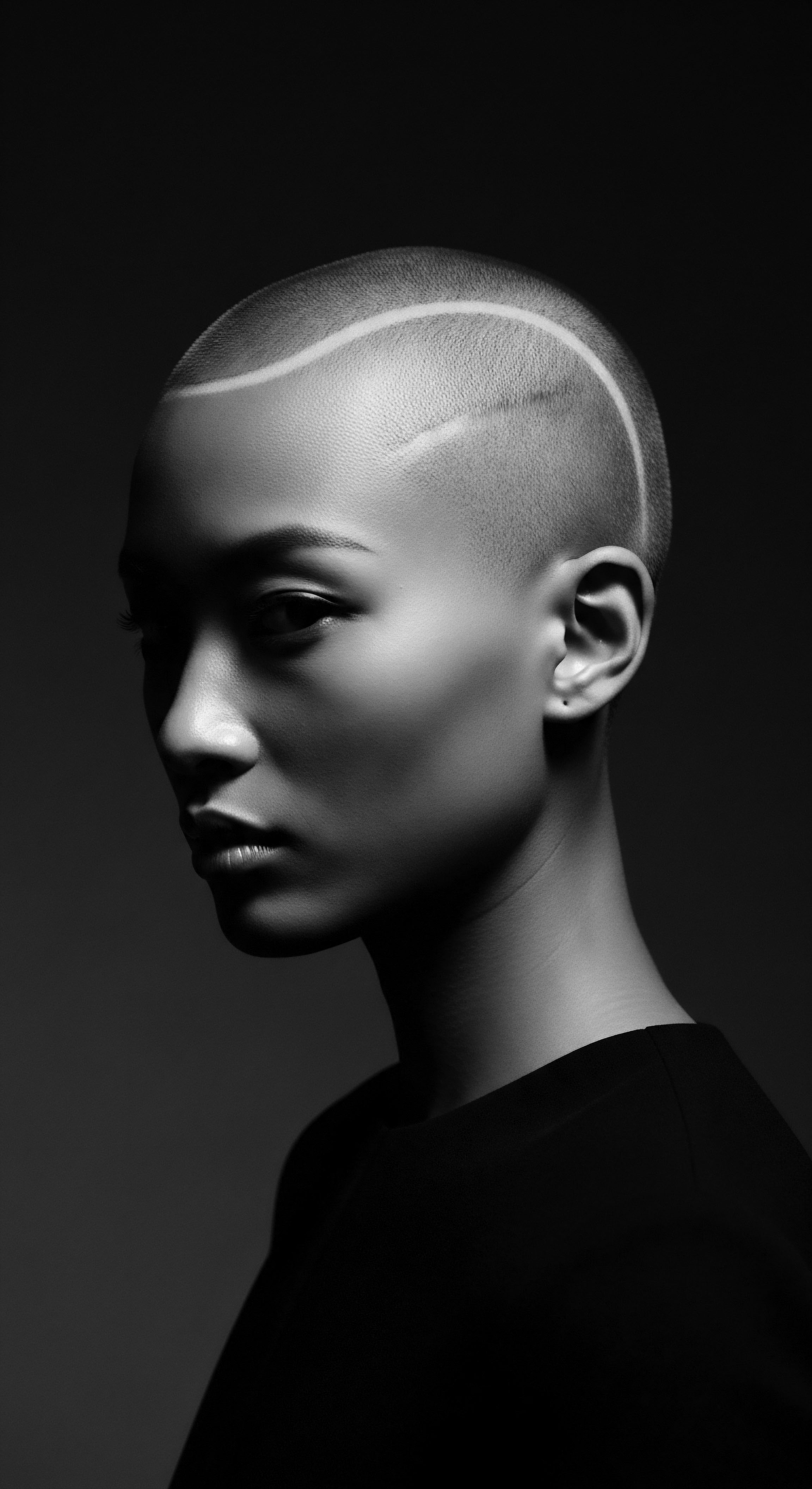
The Unbound Helix ❉ Identity, Resistance, and Future Trajectories
African Dye Traditions resonate deeply with the Black and mixed-race hair experience, particularly as a testament to resilience and an assertion of identity. Historically, within the context of the transatlantic slave trade and subsequent colonial periods, African hair was often devalued, and traditional styling and adornment practices were suppressed. However, the legacy of these traditions persisted, becoming a subtle yet potent form of cultural retention and self-expression. The act of maintaining or reviving these practices in contemporary contexts often signifies a reclamation of heritage, a celebration of natural texture, and a rejection of imposed beauty norms.
The symbolic meaning of African Dye Traditions in the modern era has expanded to encompass broader themes of self-acceptance and cultural pride. This is particularly evident in the natural hair movement, where individuals consciously choose to honor their ancestral hair textures and styles, sometimes incorporating natural dyes as a nod to historical practices. This re-engagement with traditional methods fosters a sense of continuity with past generations and a powerful statement of identity in a globalized world.
| Aspect Source of Pigments |
| Traditional African Dye Traditions Plants (henna, indigo), minerals (ochre), natural earths. |
| Modern Chemical Hair Dyes Synthetic chemicals (PPD, ammonia, hydrogen peroxide). |
| Aspect Interaction with Hair |
| Traditional African Dye Traditions Primarily coats the hair shaft, forming a bond with keratin; preserves integrity. |
| Modern Chemical Hair Dyes Penetrates cuticle, chemically alters natural pigment (melanin) through oxidation. |
| Aspect Health Implications |
| Traditional African Dye Traditions Generally gentle on hair and scalp, often provides conditioning/protective benefits. |
| Modern Chemical Hair Dyes Can be aggressive, potentially causing damage, irritation, or allergies. |
| Aspect Cultural Context |
| Traditional African Dye Traditions Deeply embedded in social, spiritual, and communal rituals; marker of identity and status. |
| Modern Chemical Hair Dyes Primarily aesthetic, driven by fashion trends and individual preference. |
The journey of African Dye Traditions also intersects with historical economic landscapes. Indigo, for example, a powerful blue dye, was a significant commodity in medieval West African empires like Mali and Songhai. Master dyers, particularly women, held considerable social and economic power, with their indigo wealth forming cornerstones of ancient economies.
This historical reality stands in stark contrast to the later exploitation of indigo cultivation during the transatlantic slave trade, where enslaved Africans were forced to produce dyes for European markets, underscoring a complex legacy of both cultural wealth and profound exploitation. The narratives surrounding these dyes are not static; they continue to evolve, carrying forward meanings of ancestral knowledge, enduring beauty, and collective remembrance.
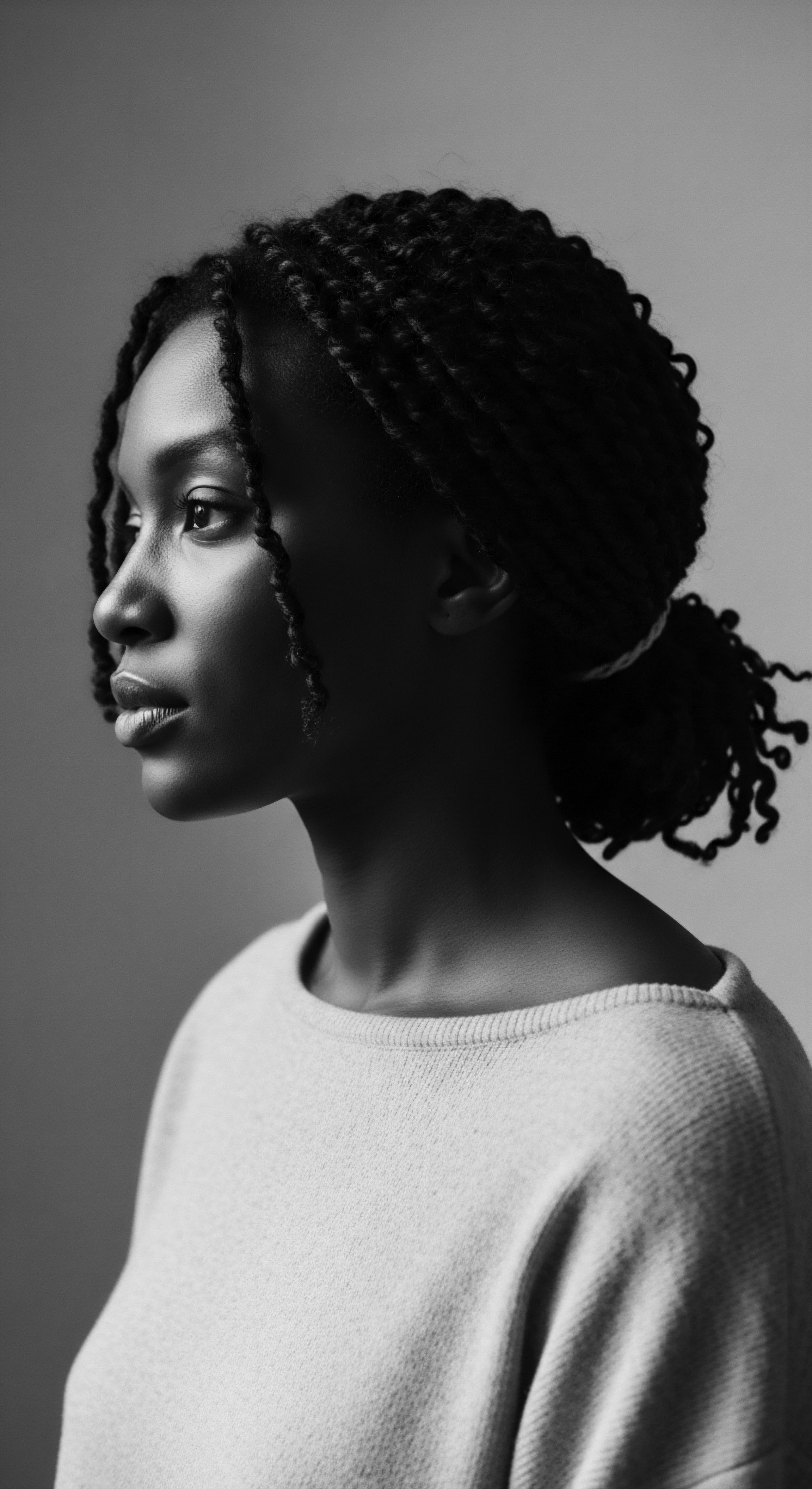
Reflection on the Heritage of African Dye Traditions
The enduring spirit of African Dye Traditions, a profound meditation on textured hair, its heritage, and its care, persists as a living, breathing archive. From the elemental kiss of ochre on Himba hair to the vibrant blue whisper of indigo on West African textiles, these practices carry stories not just of color, but of connection—to the land, to lineage, and to the vibrant pulse of human experience. We recognize in these traditions a knowing beyond mere technique, a wisdom that honored the holistic well-being of the strand as much as the individual.
This journey through ancestral pigments reveals how the choices of color were never arbitrary. They were informed by centuries of observation, by a deep reverence for the natural world, and by the communal imperative to communicate identity and belonging. The resilience of these practices, surviving epochs of displacement and cultural suppression, speaks to an inherent strength, a quiet yet powerful defiance in preserving selfhood. Our textured hair, adorned or nurtured through methods echoing these traditions, becomes a testament to this unbroken chain of knowledge and beauty.
Consider the soft, gentle approach of plant-based dyes that coax color onto the hair’s surface, rather than forcing entry through chemical means. This ancient method offers a blueprint for modern hair care, reminding us that true nourishment often comes from honoring the hair’s natural state. It invites us to pause, to observe, and to listen to the whisperings of our ancestral wisdom, understanding that every ingredient has a purpose, every ritual a meaning.
The continuing fascination with these traditions today reflects a longing for authenticity, for practices that nourish both body and spirit. As we look towards the future of textured hair care, the heritage of African Dye Traditions stands as a beacon, guiding us to solutions that are not merely effective, but also deeply respectful of our roots, our stories, and the enduring beauty of our unique crowns. It asks us to consider not just what we put on our hair, but what we honor through that choice, carrying forward a legacy as rich and diverse as the continent itself.
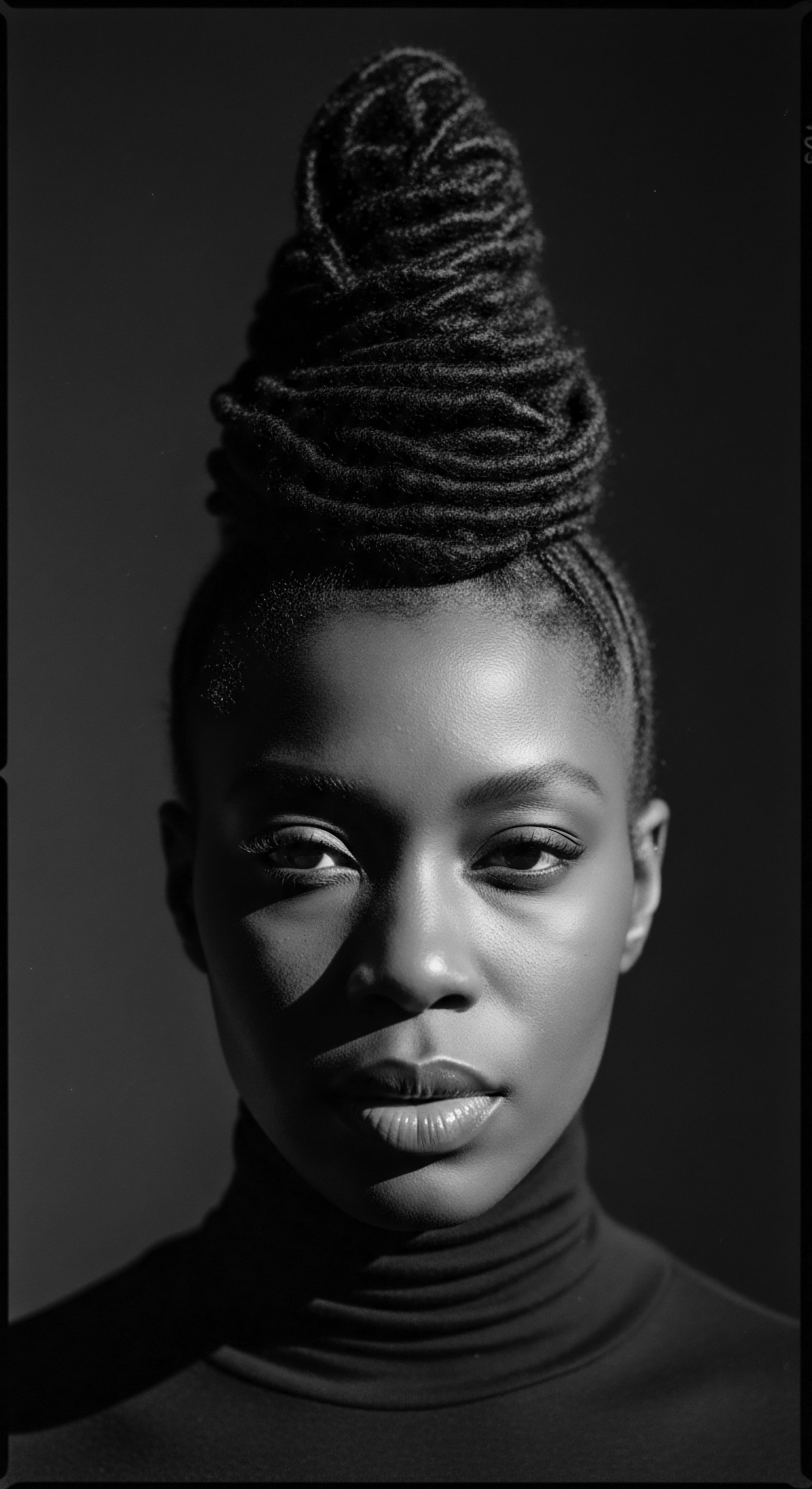
References
- Smith, J. et al. (2022). Spectral Analysis of Himba Otjize and Its Photoprotective Properties. Journal of the European Academy of Dermatology and Venereology, 36(11), 2022-2029.
- McKinley, C. E. (2011). Indigo ❉ In Search of the Color that Seduced the World. Bloomsbury Publishing.
- Sieber, R. & Herreman, F. (2000). Hair in African Art and Culture. Museum for African Art.
- Goodman, R. (2005). African Traditional Hair Practices. In Cosmetology and Culture ❉ An International Perspective (pp. 78-95). Academic Press.
- Opoku, A. K. (1978). Traditional African Hairdressing. Ghana Publishing Corporation.
- Ani, S. N. (1994). African Hair ❉ Its Cultural and Spiritual Significance. Journal of Black Studies, 24(2), 173-188.
- Bender, W. (2005). African Art and Culture. Harry N. Abrams.
- Ross, D. (1998). Wrapped in Pride ❉ Ghanaian Kente and African American Identity. University of California Press.
- Dalziel, J. M. (1937). The Useful Plants of West Tropical Africa. Crown Agents for the Colonies.
- Arnold, D. (2000). The New Encyclopedia of Science and Technology, Volume 5. Oxford University Press.
